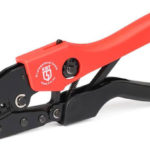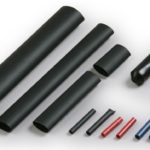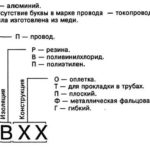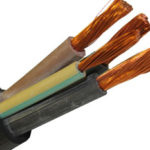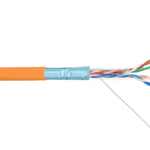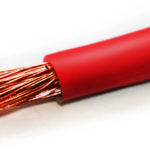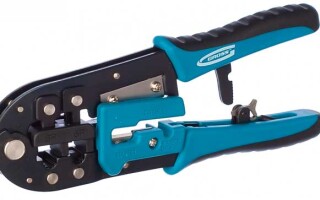Pin-type lug insulated or NSHVI is made in the form of a shell, made of special copper with electrolytic properties and a plastic ring. They are used to make typical connections at the ends of cables. The terminals obtained in this way guarantee a quality and long-lasting contact, avoiding deformation and damage to the wires when using screw fasteners.
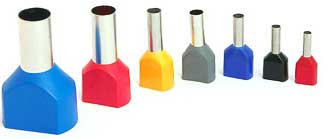
They are used for stranded copper conductors up to 35 mm². To improve the conductivity index sleeves tinned by galvanic method. Use of such products will allow to save forces and time at creation and service of electric connections.
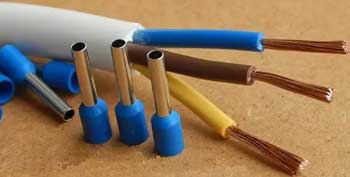
Designation
Sleeve lugs allow multi-wire contacts to be assembled into one solid conductor. Otherwise, a wire with a large number of wires can not be fixed reliably. The wire will be crushed, broken off, reducing the rated wire cross-section and worsening the conductivity. As soon as such a bundle is clamped in the terminal, the strands will disintegrate throughout the connector, losing the bandwidth of the connection.
Before the advent of the NCWR, this was accomplished by tinning the ends. This allowed all the wires to be connected in one solid bundle. But this method was labor- and time-consuming.
The use of a hose clamp will ensure a quality connection when crimping a wire. A compression lug distributes the load evenly over the entire conductor. There are copper sleeves of different diameters, with corresponding color markings. Crimping is not difficult with a special tool.
Marking
There are many different NSHWIs available, differing in construction and alloys. To help in selection of the optimum product is called in marking.
The abbreviation NSHVI means that it is an insulated pin lug. For ease of use, plastic flanges on copper sleeves are made in different colors. Each color corresponds to a different bushing diameter.
The numbers in the marking indicate the required cross-section and length of the bushing. If it is possible to mount two copper conductors, the number (2) is put.
So the marking NSHVI (2) 1,5 x8 means that the sleeve is made of tinned, copper tube for two cables with a cross section of 1.5 mm ². The length of the contact part is 8 mm.
How an SSHWI Pin Finger Lug is Made
Pin lug SSHVI is assembled from two elements:
- A conductive tube made of tinned, electrolytic copper alloy.
- Insulating polyamide flange.
For such products, a special copper alloy is used. That eliminates the possibility of damage to the conductor in the places of fixation by screw fastening. NSHVI are made with a cross-section up to 150 mm². The material used is subjected to galvanic tinning. One end of the tube is flared for easy insertion of the wire.
Selection of the NCSWI is carried out on the basis of special tables. They also indicate the color of the collar and the required tool for pressing.
Sleeves are available for pressing one and two contacts. Using the double design can be crimped two stranded wires in a bundle. They are used when you want to have two wires in one socket.
The visual difference is that the plastic flange is wider for two wires.
How to press an NSHWI sleeve lug
A crimped lug is not a removable connection. If the pressing is unsuccessful or if it becomes necessary to change the lug, it must be cut off. Special press jaws are used to compress the sleeve. They come with nozzles for different cross sections of sleeves.
There are various versions of press jaws for crimping sleeve tips, with models that can perform one or more functions. They are divided by the type of construction as follows:
- Universal press jaws - the most common and convenient to work with. They are used for stripping wires and crimping sleeves. These pliers in addition to crimping NSHVI can be used to work with other types of lugs.
- Press jaws with pressure control device. These pliers have a special device that regulates the degree of crimping on the wire and prevents damage to the sleeve.
- Press jaws with a swivel mechanism. This design allows for more compression force to facilitate the manual crimping process.
- Pincers with ratchet mechanism. The constructive feature of such pincers is that unintentional unclamping of the tool and damage to the sleeve is excluded.
Before pressing a number of preparatory measures must be carried out:
- Determining what length of tubing is required, the insulation is cut from the surface of the wire. The length of the cleaned cable must match the length of the bushing. To do this, use universal press jaws, a sharp knife or a specialized device - a stripper.
- The sleeve is flared on the inside. This makes it easier to insert the wire. But to avoid bending of individual wires, the core is pre-twisted a little.
- The diameter of the bushing is chosen according to the cross-section of the cable. The twist should enter freely, but it should not dangle.
- When preparing the press jaws it is worth paying attention to the color markings on the dies. It corresponds to the colors on the lugs. Manufacturers strive to match the color coding of the diameters between the dies and the sleeves to make the installation process easier.
When crimping lugs cable should take with a small margin. If the crimp for some reason did not work, then the lug is cut off and the procedure is repeated.
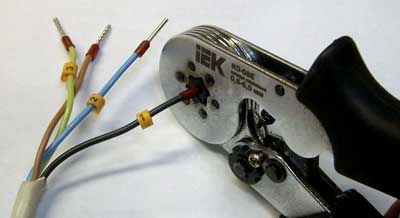
There are conditions for quality crimping:
- The stripped end of the wire should not protrude from the sleeve over the plastic insulating collar of the sleeve lug. The end should be flush with the edge of the sleeve.
- After confirming that the colors on the sleeve and die match, squeeze the pliers handles until the ratchet is triggered. This should lock the tool without allowing it to expand. Once checked, the ratchet is released.
- When using pliers without a ratchet, the degree of compression is controlled by light movement of the wires. The wires should be tight and should not move.
- When finished, it is best to hold the wire and pull on the ferrule to be sure it is securely in contact.
There are devices with two-circuit crimping. They differ in that they squeeze not only the copper sleeve, but also the plastic insulator. The matrix of such pliers consists of two sockets of different diameters. Before crimping, make sure that the diameters match and that the sleeve and flange are in place.
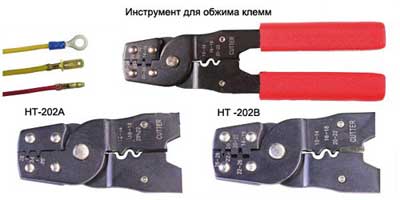
Crimping a double insulated lug has some differences. It is used when several conductors need to be crimped into one terminal. In this case, the use of single lugs creates difficulties in the connection. That is why double lugs are used.
The process consists of inserting several pre-prepared wires into a wide flange and crimping them with a crimper. This device is also suitable for crimping single lugs.
The crimper is for crimping sleeve lugs and comes in self-adjusting and interchangeable die models. The self-adjusting unit has four movable cams that compress the sleeve. This design does not require interchangeable sleeves. The diameter of the matching sleeves is specified on the tool itself.
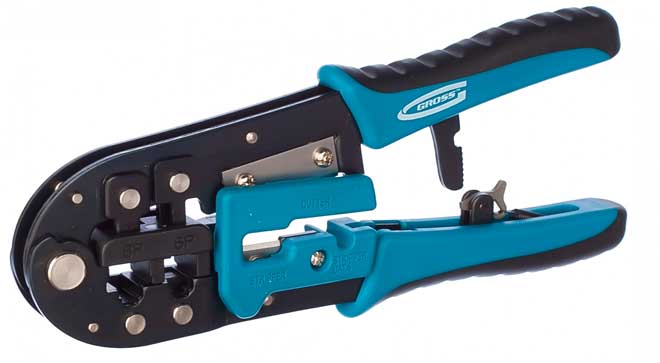
If several wires need to be crimped together, but no double sleeve is available, lugs with a larger cross-section are used so that two wires can fit inside.
The size of the sleeve lugs and the wire cross-section are specified by the manufacturer. It is necessary to observe them precisely. This will prevent damage to the cable, eliminate the need for re-pressing and guarantee trouble-free operation for the entire service life. Specialized tools will ensure the reliability of the work done, facilitate the installation process.
Related articles:
